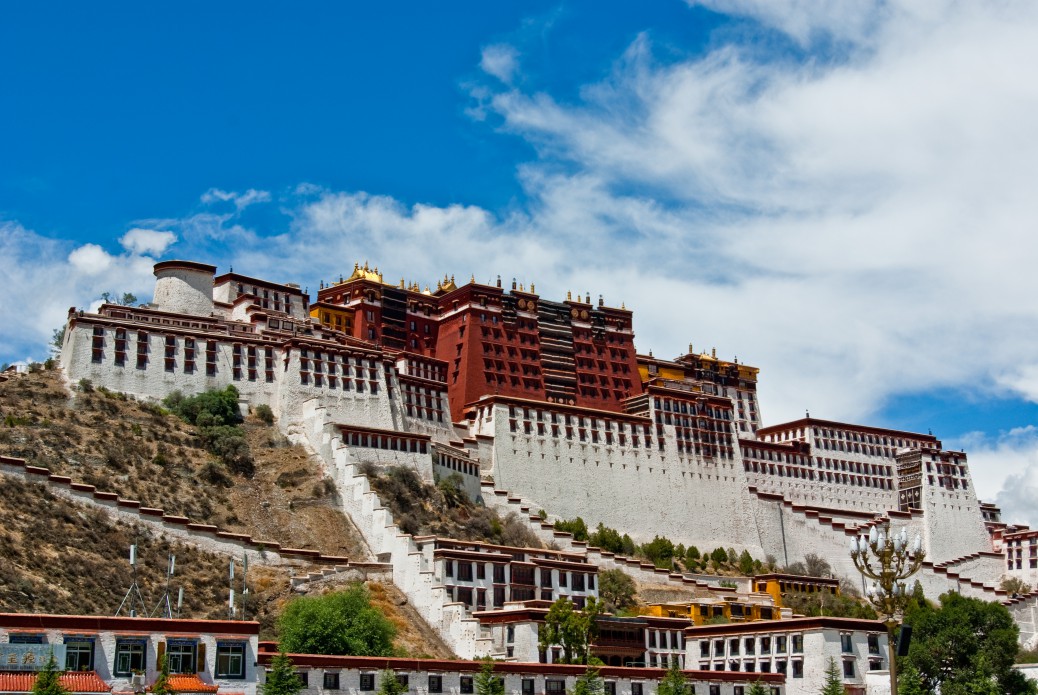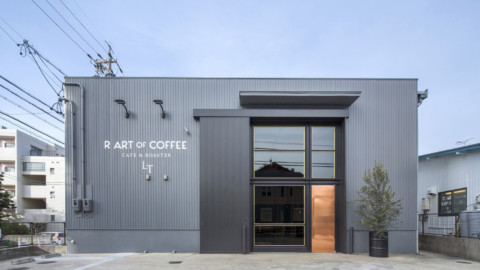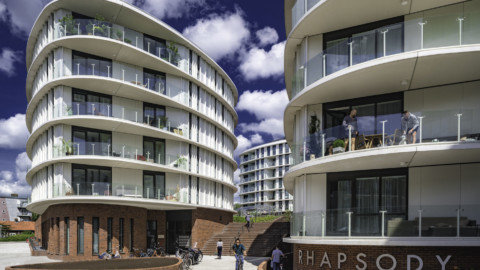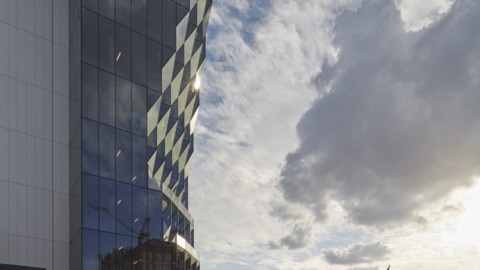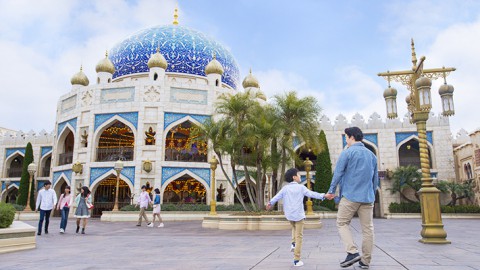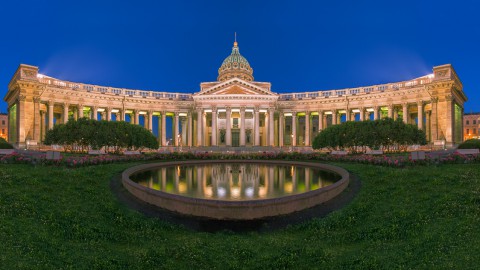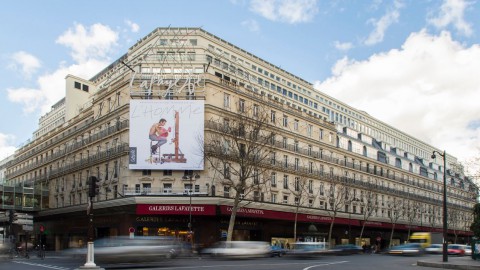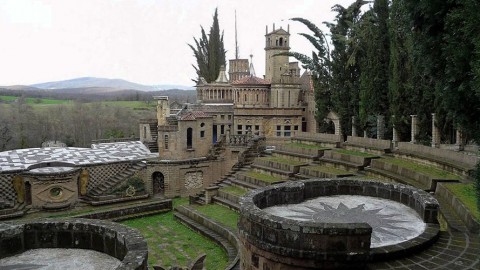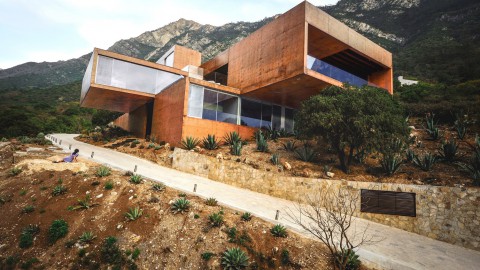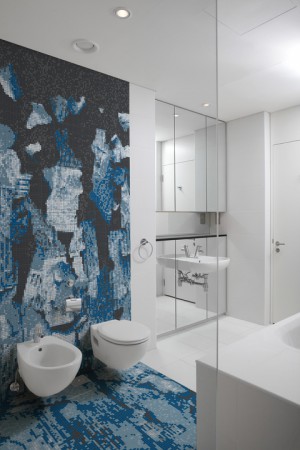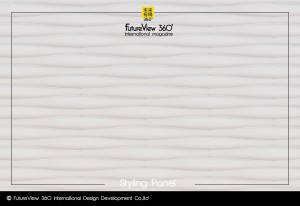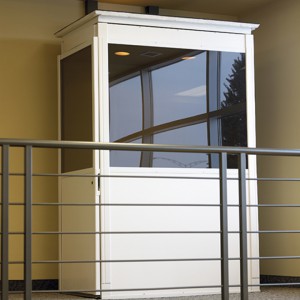Potala Palace 布達拉宮
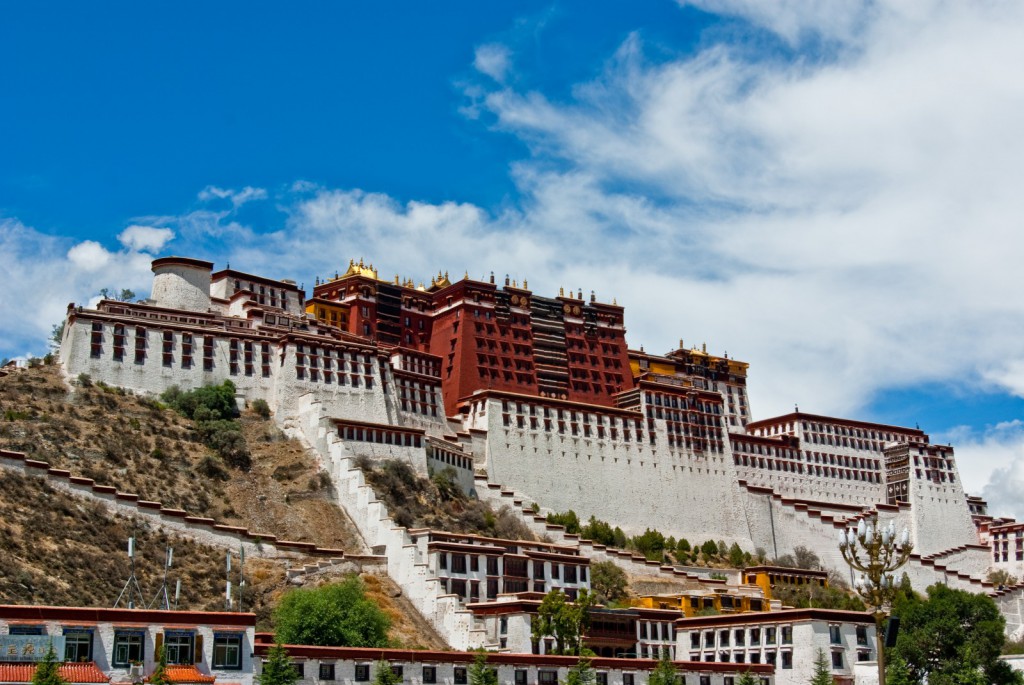
The Potala Palace (Tibetan: ཕོ་བྲང་པོ་ཏ་ལ་, Wylie: pho brang Potala) in Lhasa, Tibet Autonomous Region, China was the residence of the Dalai Lama until the 14th Dalai Lama fled to India during the 1959 Tibetan uprising. It is now a museum and World Heritage Site.
The palace is named after Mount Potalaka, the mythical abode of the bodhisattva Avalokiteśvara.The 5th Dalai Lama started its construction in 1645 after one of his spiritual advisers, Konchog Chophel (died 1646), pointed out that the site was ideal as a seat of government, situated as it is between Drepung and Sera monasteries and the old city of Lhasa. It may overlay the remains of an earlier fortress called the White or Red Palace on the site, built by Songtsen Gampo in 637.
The building measures 400 metres (1,300 ft) east-west and 350 metres (1,150 ft) north-south, with sloping stone walls averaging 3 metres (9.8 ft) thick, and 5 metres (16 ft) thick at the base, and with copper poured into the foundations to help proof it against earthquakes. Thirteen storeys of buildings, containing over 1,000 rooms, 10,000 shrines and about 200,000 statues, soar 117 metres (384 ft) on top of Marpo Ri, the “Red Hill”, rising more than 300 metres (980 ft) in total above the valley floor.
Tradition has it that the three main hills of Lhasa represent the “Three Protectors of Tibet”. Chokpori, just to the south of the Potala, is the soul-mountain (Wylie: bla ri) of Vajrapani, Pongwari that of Manjusri, and Marpori, the hill on which the Potala stands, represents Avalokiteśvara.
中國西藏自治區拉薩的布達拉宮(藏語:ཕོ་བྲང་པོ་ཏ་ལ་,Wylie:pho brang Potala)是達賴喇嘛的住所,直到十九世紀達賴喇嘛在1959年的藏人期間逃往印度起義。它現在是一個博物館和世界遺產。
這座宮殿以菩薩觀音菩薩觀音菩薩山的名字命名。第五世達賴喇嘛在他的一位精神顧問Konchog Chophel(1646年去世)之後於1645年開始建造,他指出該遺址是理想的座位。政府,位於哲蚌寺和色拉寺以及拉薩老城之間。它可能覆蓋了一個名為白色或紅色宮殿的早期堡壘的遺骸,該遺址由Songtsen Gampo於637年建造。
該建築東西長400米(1,300英尺),南北長350米(1,150英尺),石板傾斜,平均厚3米(9.8英尺),底部厚5米(16英尺),銅倒入地基,以幫助抵禦地震。 13層高的建築物,包含超過1,000個房間,10,000個神社和大約200,000個雕像,在Marpo Ri頂部117米(384英尺)處,“紅山”,在山谷上方總長超過300米(980英尺)地板。
傳統上說,拉薩的三個主要山丘代表著“西藏的三個保護者”。位於布達拉宮南部的Chokpori,是金剛山的靈魂山(Wylie:bla ri),文殊菩薩的Pongwari,以及布達拉宮所在的Marpori,代表觀世音菩薩。
Location:Lhasa, Tibet, China
Geographic coordinates:29°39′28″N 91°07′01″ECoordinates: 29°39′28″N 91°07′01″E
Founder:Songtsen Gampo
UNESCO World Heritage Site
Official name:Historic Ensemble of the Potala Palace, Lhasa
Type:Cultural
Criteria:i, iv, vi
Designated:1994 (18th session)
Reference no.:707
Region:Asia-Pacific
Extensions:2000; 2001
地點:中國西藏拉薩
地理坐標:29°39’28“N 91°07’01”ECoordinates:29°39’28“N 91°07’01”E
創始人:Songtsen Gampo
聯合國教科文組織世界遺產
官方名稱:拉薩布達拉宮歷史建築群
類型:文化
標準:i,iv,vi
指定:1994年(第18屆)
參考編號:707
地區:亞太
擴展:2000;2001年
History
The former quarters of the Dalai Lama. The figure in the throne represents Tenzin Gyatso, the incumbent Dalai Lama
The site on which the Potala Palace rises is built over a palace erected by Songtsen Gampo on the Red Hill. The Potala contains two chapels on its northwest corner that conserve parts of the original building. One is the Phakpa Lhakhang, the other the Chogyel Drupuk, a recessed cavern identified as Songtsen Gampo’s meditation cave. Lozang Gyatso, the Great Fifth Dalai Lama, started the construction of the modern Potala Palace in 1645 after one of his spiritual advisers, Konchog Chophel (died 1646), pointed out that the site was ideal as a seat of government, situated as it is between Drepung and Sera monasteries and the old city of Lhasa. The external structure was built in 3 years, while the interior, together with its furnishings, took 45 years to complete. The Dalai Lama and his government moved into the Potrang Karpo (‘White Palace’) in 1649. Construction lasted until 1694,some twelve years after his death. The Potala was used as a winter palace by the Dalai Lama from that time. The Potrang Marpo (‘Red Palace’) was added between 1690 and 1694.
The new palace got its name from a hill on Cape Comorin at the southern tip of India—a rocky point sacred to the bodhisattva of compassion, who is known as Avalokitesvara, or Chenrezi. The Tibetans themselves rarely speak of the sacred place as the “Potala”, but rather as “Peak Potala” (Tse Potala), or most commonly as “the Peak”.
The palace was slightly damaged during the Tibetan uprising against the Chinese in 1959, when Chinese shells were launched into the palace’s windows[citation needed]. Before Chamdo Jampa Kalden was shot and taken prisoner by soldiers of the People’s Liberation Army, he witnessed “Chinese cannon shells began landing on Norbulingka past midnight on March 19th, 1959… The sky lit up as the Chinese shells hit the Chakpori Medical College and the Potala.”It also escaped damage during the Cultural Revolution in 1966 through the personal intervention of Zhou Enlai, who was then the Premier of the People’s Republic of China. Tibetan activist Tsering Woeser claims that the palace, which harboured “over 100,000 volumes of scriptures and historical documents” and “many store rooms for housing precious objects, handicrafts, paintings, wall hangings, statues, and ancient armour”, “was almost robbed empty”. On the other hand, tibetologist Amy Heller writes that “the invaluable library and artistic treasures accumulated over the centuries in the Potala have been preserved.”
The Potala Palace was inscribed to the UNESCO World Heritage List in 1994. In 2000 and 2001, Jokhang Temple and Norbulingka were added to the list as extensions to the sites. Rapid modernisation has been a concern for UNESCO, however, which expressed concern over the building of modern structures immediately around the palace which threaten the palace’s unique atmosphere. The Chinese government responded by enacting a rule barring the building of any structure taller than 21 metres in the area. UNESCO was also concerned over the materials used during the restoration of the palace, which commenced in 2002 at a cost of RMB180 million (US$22.5 million), although the palace’s director, Qiangba Gesang, has clarified that only traditional materials and craftsmanship were used. The palace has also received restoration works between 1989 and 1994, costing RMB55 million (US$6.875 million).
The number of visitors to the palace was restricted to 1,600 a day, with opening hours reduced to six hours daily to avoid over-crowding from 1 May 2003. The palace was receiving an average of 1,500 a day prior to the introduction of the quota, sometimes peaking to over 5,000 in one day. Visits to the structure’s roof were banned after restoration efforts were completed in 2006 to avoid further structural damage.
Visitorship quotas were raised to 2,300 daily to accommodate a 30% increase in visitorship since the opening of the Qingzang railway into Lhasa on 1 July 2006, but the quota is often reached by mid-morning.Opening hours were extended during the peak period in the months of July to September, where over 6,000 visitors would descend on the site.
歷史
達賴喇嘛的前幾個季度。王位中的人物代表現任達賴喇嘛丹增嘉措
布達拉宮升起的地點建在紅山上松贊乾布建造的宮殿上。布達拉宮的西北角有兩個小教堂,保存了原有建築的一部分。一個是Phakpa Lhakhang,另一個是Chogyel Drupuk,一個隱藏的洞穴,被確定為Songtsen Gampo的冥想洞穴。偉大的第五世達賴喇嘛Lozang Gyatso於1645年開始建造現代布達拉宮,此前他的一位精神顧問Konchog Chophel(1646年去世)指出該遺址是理想的政府所在地,因為它是在哲蚌寺和色拉寺以及拉薩老城之間。外部結構建於3年,而內部及其家具則需要45年才能完成。達賴喇嘛及其政府於1649年遷入Potrang Karpo(“白宮”)。建築一直持續到1694年,即他去世後大約12年。從那時起,達賴喇嘛將布達拉宮用作冬宮。 Potrang Marpo(’紅宮’)於1690年至1694年間增加。
這座新宮殿的名字來自印度南端科摩林角的一座小山 – 一座神聖的慈悲菩薩,被稱為觀世音菩薩或陳雷茲。藏人自己很少說神聖的地方是“布達拉宮”,而是“山峰布達拉”(Tse Potala),或者最常見的是“山頂”。
1959年,當中國的砲彈被發射到宮殿的窗戶時,這座宮殿在對西藏人的起義中受到輕微損壞[需要引證]。在Chamdo Jampa Kalden被人民解放軍士兵開槍打死之前,他目睹了“中國砲彈於1959年3月19日午夜開始降落在Norbulingka ……隨著中國砲彈擊中Chakpori醫學院,天空亮了“它還通過當時中華人民共和國總理周恩來的親自乾預,在1966年文化大革命期間逃脫了破壞。西藏活動家Tsering Woeser聲稱,這座宮殿藏有“超過10萬冊經文和歷史文獻”和“許多用於存放珍貴物品,手工藝品,繪畫,壁掛,雕像和古代盔甲的儲藏室”,“幾乎被搶空了“。另一方面,西藏學家艾米·海勒(Amy Heller)寫道:“幾個世紀以來在布達拉宮積累的寶貴的圖書館和藝術珍品得到了保護。”
布達拉宮於1994年被列入聯合國教科文組織世界遺產名錄。2000年和2001年,大昭寺和羅布林卡被列為該遺址的延伸。然而,快速現代化一直是教科文組織關注的問題,它對宮殿周圍現代建築的建設表示擔憂,這威脅到了宮殿的獨特氛圍。中國政府作出回應,制定了一項規則,禁止在該地區建造任何高度超過21米的建築物。教科文組織還對宮殿修復過程中使用的材料表示關注,該宮殿於2002年開始耗資1.8億元人民幣(2250萬美元),儘管宮殿主任強巴格桑澄清說只使用了傳統的材料和工藝。宮殿還在1989年至1994年期間接受了修復工程,耗資人民幣5500萬元(68.75億美元)。
宮殿的遊客人數限制在每天1600人,開放時間每天減少到六小時,以避免從2003年5月1日開始過度擁擠。宮殿在配額出台前平均每天接待1,500人,有時一天達到5000以上。在2006年完成修復工作後,對建築物屋頂的訪問被禁止,以避免進一步的結構損壞。
自2006年7月1日青藏鐵路開通至拉薩以來,遊客配額每天提高至2,300人次,以增加30%的遊客人數,但配額通常在上午中午達到。在高峰期間,營業時間延長了。 7月至9月,將有超過6,000名訪客登陸該網站。
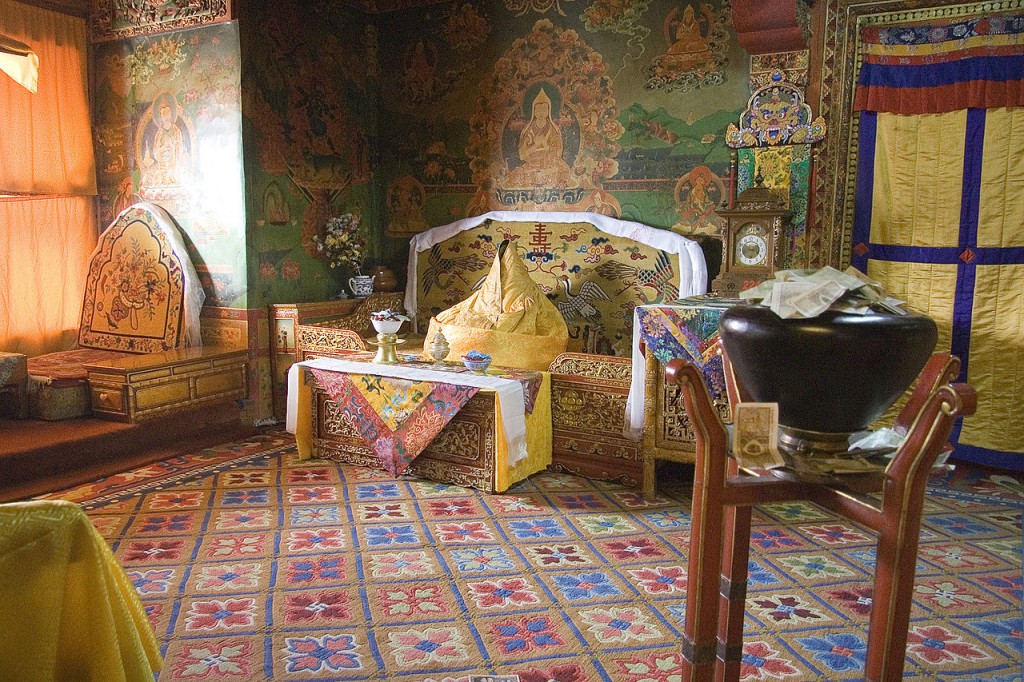
Architecture
The Potala Palace in Lhasa.
The Sertreng ceremony photographed by Hugh Edward Richardson on April 28, 1949 with the double giant thangka banner on the white front of the palace.
Built at an altitude of 3,700 m (12,100 ft), on the side of Ri Marpo (‘Red Mountain’) in the centre of Lhasa Valley, the Potala Palace, with its vast inward-sloping walls broken only in the upper parts by straight rows of many windows, and its flat roofs at various levels, is not unlike a fortress in appearance. At the south base of the rock is a large space enclosed by walls and gates, with great porticos on the inner side. A series of tolerably easy staircases, broken by intervals of gentle ascent, leads to the summit of the rock. The whole width of this is occupied by the palace.
The central part of this group of buildings rises in a vast quadrangular mass above its satellites to a great height, terminating in gilt canopies similar to those on the Jokhang. This central member of Potala is called the “red palace” from its crimson colour, which distinguishes it from the rest. It contains the principal halls and chapels and shrines of past Dalai Lamas. There is in these much rich decorative painting, with jewelled work, carving and other ornamentation.
The lower white frontage on the south side of the palace was used to hoist two gigantic thangkas joined together representing the figures of Tara and Sakyamuni during the Sertreng Festival on the 30th day of the second Tibetan month.
The Chinese Putuo Zongcheng Temple, also a UNESCO World Heritage Site, built between 1767 and 1771, was in part modelled after the Potala Palace. The palace was named by the American television show Good Morning America and newspaper USA Today as one of the “New Seven Wonders”.
The Leh Palace in Leh, Ladakh, India is also modelled after the Potala Palace.
建築
拉薩布達拉宮。
1949年4月28日,休·愛德華·理查森拍攝的Sertreng儀式在宮殿的白色前面拍攝了雙巨人唐卡。
建於海拔3,700米(12,100英尺),位於拉薩河谷中心的Ri Marpo(’紅山’)一側的布達拉宮,其巨大的向內傾斜的牆壁僅在上部由直線斷開一排排的許多窗戶,以及各種層次的平屋頂,與外觀上的堡壘不同。岩石的南部是一個由牆壁和大門圍成的大空間,內側有很棒的門廊。一系列容易上手的樓梯,經過輕微上升的間隔,通向岩石的頂峰。整個寬度由宮殿佔據。
這組建築物的中心部分以高於其衛星的巨大四邊形質量上升到一個很高的高度,終止於類似於大昭寺的鍍金簷篷。布達拉宮的這個中心成員從深紅色中被稱為“紅色宮殿”,這與其他人區別開來。它包含了過去達賴喇嘛的主要大廳,小教堂和教堂。在這些豐富的裝飾畫中,有寶石作品,雕刻和其他裝飾。
在西藏第二個月的第30天,在Sertreng節期間,宮殿南側的較低的白色正面被用來提升兩個巨大的唐卡,這些唐卡連接在一起代表塔拉和釋迦牟尼的形象。
中國普陀宗城寺也是聯合國教科文組織世界遺產,建於1767年至1771年之間,部分以布達拉宮為藍本。這座宮殿被美國電視節目“早安美國”和“今日美國報”評為“新七大奇蹟”之一。
位於印度拉達克Leh的Leh Palace也以布達拉宮為藍本。
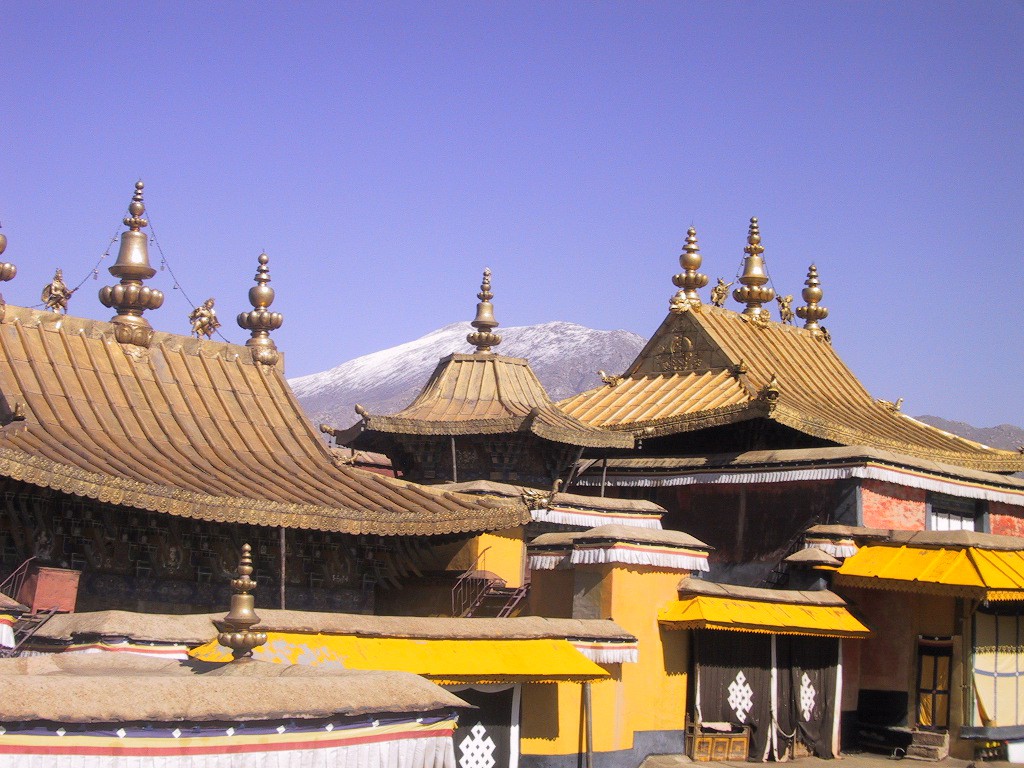
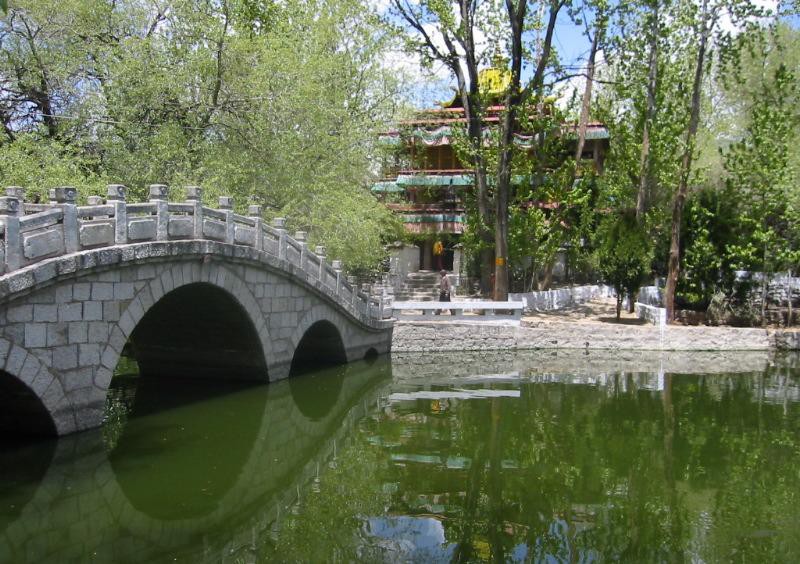
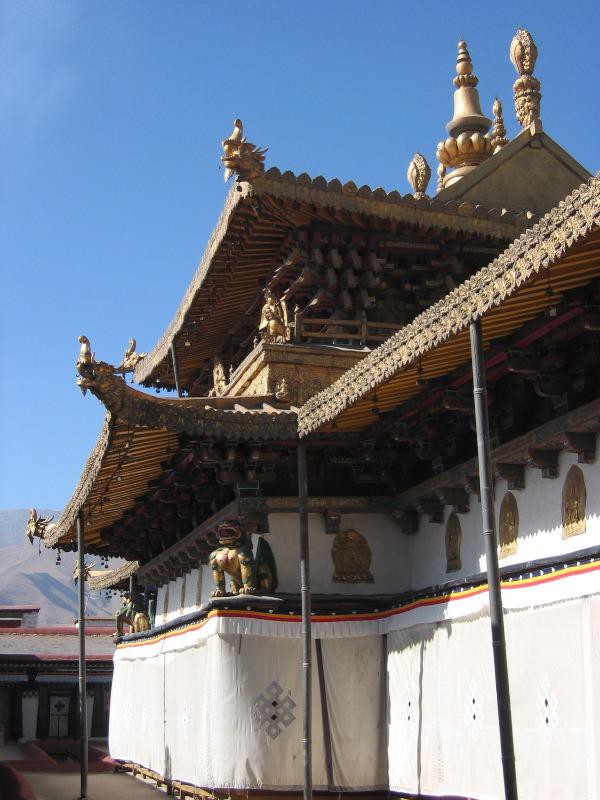
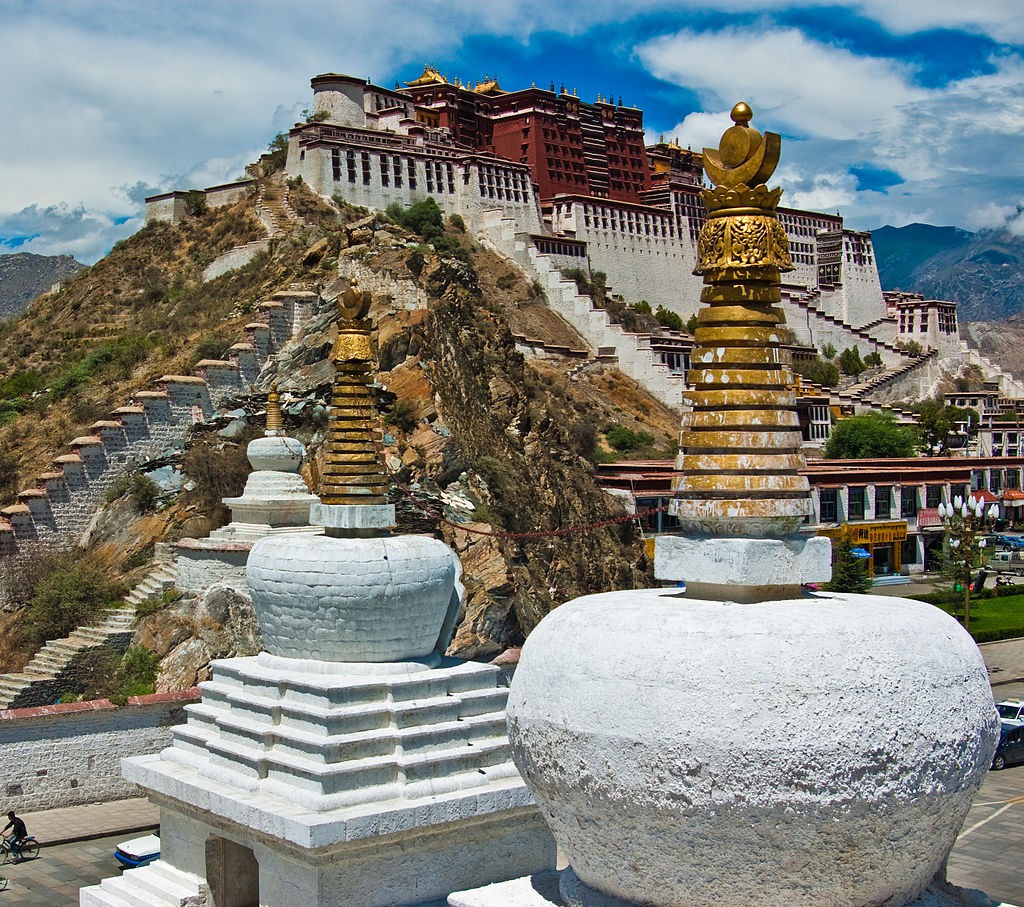
FROM:Potala Palace, Lhasa, Tibet, China in HD
FROM:See Potala Palace, the Iconic Heart of Tibetan Buddhism | National Geographic
Don’t you think it’s addictive?
Want to know more about the beauty of architecture?
Come and join our members to explore the beauty of architectural design.
覺得看得不過癮嗎?
想要知道更多建築之美嗎?
快來加入我們的會員,一同探索建築設計之美。
The above article is purely for appreciation and sharing purposes, as well as the construction of new technology and the public can be in-depth understanding of the information at the same time there are sources, will be able to query, no use of the document as a commercial transaction, if illegal, please inform the We will immediately remove the site, thank you for cooperation.
以上文章純粹作為欣賞及分享用途,以及將建築新型技術傳遞給與大眾能夠深入了解,同時資料還有來源,將可查詢,絕無使用該文件資料作為商業交易行為,如有違法請務必告知該網站我們將立即處理撤除,謝謝合作。

